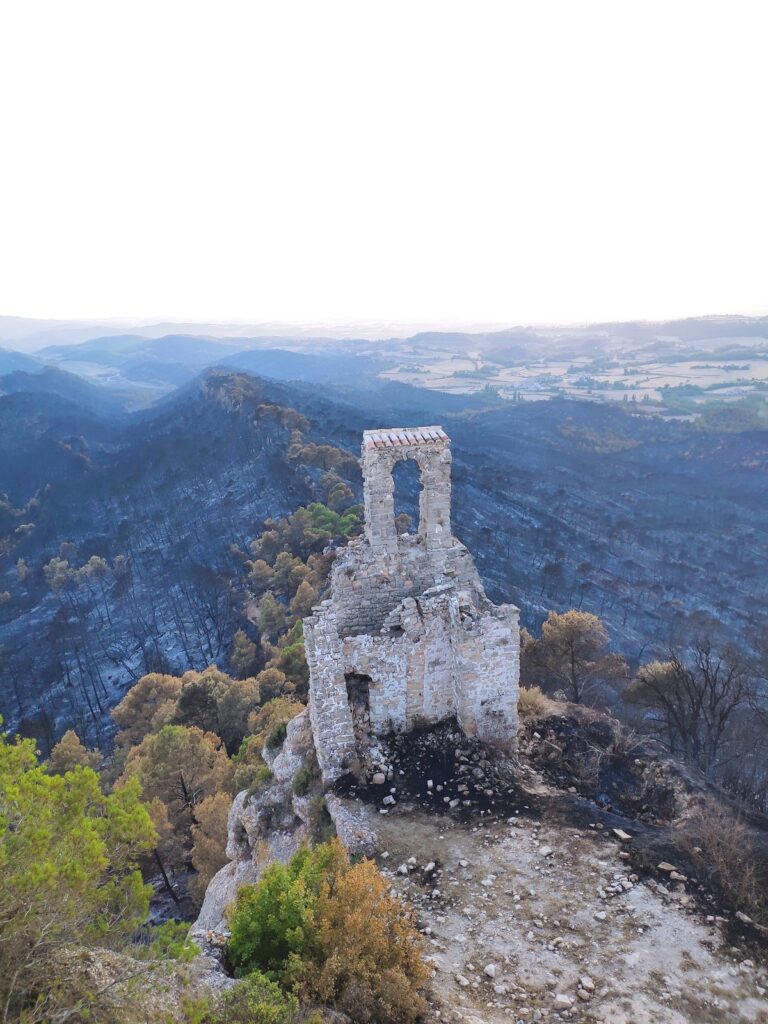Castell de Seguer: A Medieval Fortress in Seguer, Spain
Visitor Information
Google Rating: 4.6
Popularity: Very Low
Google Maps: View on Google Maps
Official Website: www.poblesdecatalunya.cat
Country: Spain
Civilization: Unclassified
Remains: Military
History
The Castell de Seguer is located in the municipality of Seguer in modern Spain. This medieval fortress was originally established by the Christian inhabitants of the region during the early Middle Ages as a defensive stronghold.
The earliest mention of the site dates back to 1077, when the Seguer hill and its fortified tower were donated by Guadall Guillem and Llop Sanç to Bonfill Oliba, a significant ecclesiastical figure. This transfer of property was subsequently confirmed by Count Ramon Berenguer I of Barcelona, reflecting the castle’s importance within the Christian feudal system amid frequent conflicts with Saracen forces who raided the area during that period.
Between the 11th and 14th centuries, documentary references to Castell de Seguer are scarce, but by the mid-14th century (1365–1370), ownership had passed to Pere de Montagut. During this time, the castle was incorporated into the jurisdiction of Vilafranca del Penedès. The Montagut family held the site as vassals under the Cervelló lineage, indicating its integration into regional feudal relationships.
Later, from the late 18th century until the 19th century, control of Seguer transferred to the Maranyona family. Their lordship ended with the Spanish disentailment process, known as the Desamortitzacions, which involved the confiscation and redistribution of church and noble lands. Throughout its history, Castell de Seguer served a key strategic role in overseeing the lower part of the upper Gaià river region, which was important for local defense and territorial control.
Remains
Today, the remains of Castell de Seguer consist mainly of a large rectangular building, now largely in ruins, demonstrating a mixture of architectural phases. The core structure reflects a late medieval renovation layered atop an original fortification dating to the 11th century, revealing the site’s long-term military use and adaptation.
One of the oldest features visible is a circular defensive tower located near the central section of the northern wall. This tower belonged to the castle’s founding phase and stands as a remnant of the earliest fortification efforts. Foundational traces of the north wall remain, including a small semicircular buttress situated close to the northwest end near the adjacent church, indicating efforts to reinforce the defensive structures.
The 13th to 14th centuries brought a significant transformation when the site was developed into a fortified complex that incorporated a residential building and the church of Sant Bartomeu. The residential portion is a three-story, rectangular-plan building constructed with irregular stone masonry. Notably, its corners are strengthened with finely crafted ashlar blocks, which are large, squared stones cut to create stable edges.
The castle’s main entrance once faced south but has completely collapsed. In contrast, the western wall remains the best preserved. This wall includes a late Gothic twin window on the second floor, reflecting stylistic elements of the medieval period. In later centuries, additional modifications occurred, such as the insertion of a large window at the first-floor level of the western façade, revealing ongoing adaptation even after the medieval era.
Recognized for its cultural and historic significance, Castell de Seguer is protected under Catalan and Spanish heritage laws, registered with the reference number RI-51-0006725. Its ruins offer valuable insights into medieval defensive architecture and local feudal history.







